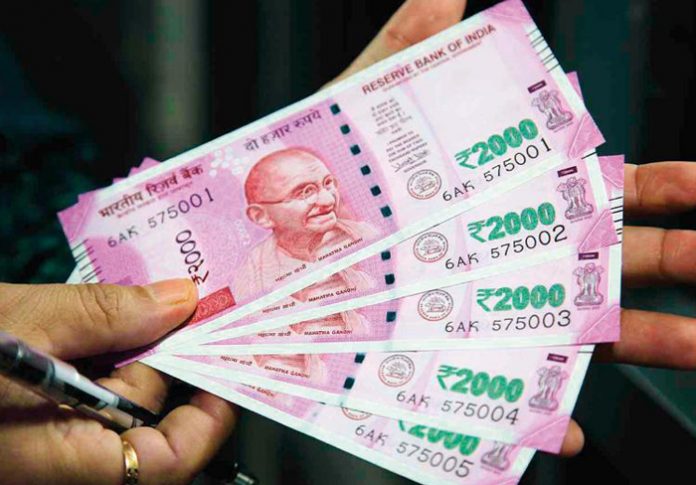Every $10 rise in oil prices widens the current-account gap by $12.5b
The turn of fortune for India’s rupee couldn’t be more rapid. It has gone from being Asia’s best performer to the worst in two weeks.
A rebound in prices of oil, the nation’s top import, and concerns about an expensive bailout for farmers before general elections to be held by May has caused the rupee to miss out on a revival in emerging currencies.
Funds are instead piling into the Indonesian rupiah and Chinese yuan on optimism over trade talks and signs of a Federal Reserve rate hike pause. The rupee “may be leading the divergence within EM Asia and unless oil’s trajectory changes it will be a short,” said Vishnu Varathan, head of economics and strategy at Mizuho Bank Ltd in Singapore.
The currency will trail Asian peers “as oil’s amplified effects via inflation, current account and fiscal channels are bumping up against renewed concerns about fiscal slippage from farm waivers.” The rupee has slid about a per cent versus dollar this year after posting the best quarterly gain since March 2017.
The Bloomberg JPMorgan Asia Dollar Index and almost all regional currencies have strengthened, led by the rupiah and the Thai baht. Goldman Sachs Group Inc predicts the rupiah to outperform the rupee because of diverging impact of oil prices, portfolio flows and monetary policy sensitivities to the US Fed.
Aberdeen Standard Investments, which held $384 billion global assets in June, is advising investors to sell Indian government bonds and pile into Philippine debt. A Bloomberg survey of analysts forecast a drop to 71.20 per dollar by March 31.
Mizuho Bank sees the currency’s drop extending to 72.50 by end-March, while ING Group expects it to test 73 levels during the period. The rupee fell 0.1 per cent to 70.49 as of 1:36pm in Mumbai. Oil dependence The rupee “may continue to under-perform Asia like what happened last year when Asia’s most oil-dependent currencies, including IDR and PHP, were hit hard,” said Prakash Sakpal, economist at ING Groep NV in Singapore.
“However, domestic factors are more prominently negative for INR this year than last.” India relies on imports to meet about 80 per cent of its energy needs and higher costs may unsettle the government’s fiscal math. Every $10 rise in oil prices widens the current-account gap by $12.5 billion, or 43 basis points of the gross domestic product, and bumps up inflation by 49 basis points, according to a central bank study.
The rupee’s decline is also accentuated by deepening bond losses, triggered by worries that the ruling party may bust its fiscal deficit target through populist measures to boost chances of re-election after suffering electoral losses in three key states last month.
The yield on 2028 bonds, the most traded, climbed to 7.52 per cent Thursday, rebounding from a nine-month low of 7.22 per cent in December.
Meanwhile, the rupee’s three-month historical volatility is now the highest among major Asian nations. “With the risk of fiscal slippage rising, bond market is nervous and that’s getting transmitted to the rupee,” said Anindya Banerjee, a foreign-exchange analyst at Kotak Securities in Mumbai.

















